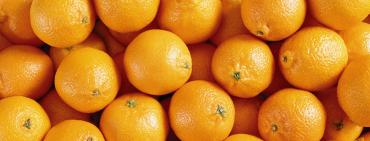
Florida orange output will drop almost 30 percent from what it was last year, the U.S. Department of Agriculture’s (USDA) National Agricultural Statistics Service (NASS) forecast on Wednesday.
NASS predicted 69.0 million boxes of oranges from Florida this season, below the 74 million it forecast last month and the 80 million included in October's forecast. This latest number represents a 29 percent reduction from last year’s output. NASS forecast 36 million boxes of early, midseason and Navel oranges, down 24 percent from last year. The forecast for Florida Valencia oranges stood at 33 million boxes, down 33 percent from last season and an 11 percent drop from NASS’ prediction last month.
Florida frozen concentrated orange juice (FCOJ) continued to drop as well though the 1.56 gallons per box is up from last year’s 1.50 gallons a box. However, in October, NASS forecast 1.61 gallons a box which was lowered to 1.58 gallons per box in November.
The Florida Department of Citrus (FDOC) reacted to the grim forecast on Wednesday.
“It is still early in the season and we have learned that forecasts can be fluid,” said Shannon Shepp, executive director of the FDOC. “Here at the Department, we continue to remain focused on supporting the efforts of our growers through impactful programs that promote Florida citrus as a healthy and delicious part of everyday life. Florida citrus is a premium product valued by consumers around the world and this forecast does not change that.”
NASS also forecast that Florida grapefruit production would drop from last year’s 12.9 million boxes to 11.5 million boxes.
“Not unexpected, these numbers reflect what we’ve been hearing from grapefruit growers throughout the state,” said Michael Schadler, the director of international marketing at the FDOC. “As peak season approaches, growers continue to be very happy with the eating quality of this year’s grapefruit crop and the Department remains dedicated to promoting their signature product to consumers around the world.”
The decline in Florida citrus in recent years is mostly the result of Huanglongbing (HLB), better known as citrus greening.
Spread by the Asian citrus psyllid, a tiny insect, citrus greening infects trees, leading to deformed and bitter fruit. Eventually, citrus greening kills the tree. One of the few ways to fight citrus greening is by removing the tree.
In 2013, the Florida citrus industry -- which generates $9 billion and employs more than 75,000 Floridians -- saw its worst year in almost a quarter century and that downward trend has been continuing. Earlier this year, the USDA awarded $30 million to fight citrus greening and, back in April, launched a project with an additional $23 million in grants to fight citrus greening.
Reach Kevin Derby at kderby@sunshinestatenews.com or follow him on Twitter: @KevinDerbySSN


